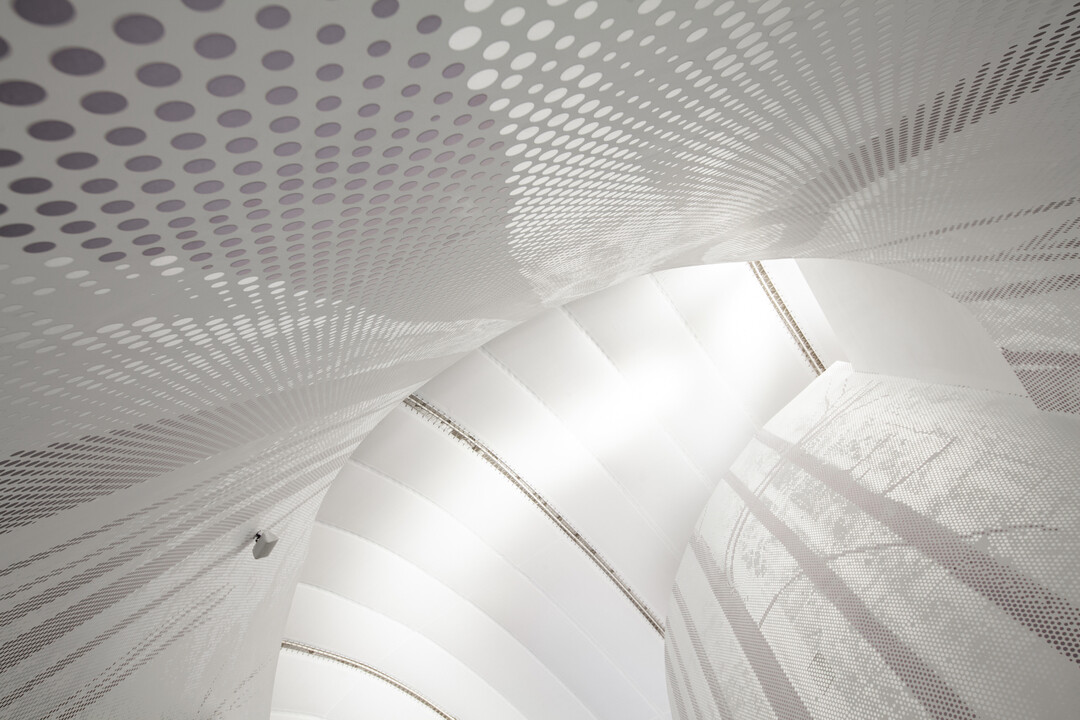
Members Only
Please join as a member and click "Members Only" to read more complete articles and exclusive content.

Please join as a member and click "Members Only" to read more complete articles and exclusive content.
「布雷松」(Blasón)是作家胡安・拉蒙・席爾瓦・費拉達(Juan Ramón Silva Ferrada)的住宅與工作室,也是Burr事務所「工業復興元素」計畫中的其中一件空間設計作品。在過去三十年裡,西班牙馬德里市中心因為當地房價飆升、噪音與環境保護法規限制,與交通繁忙等因素,使許多工業廠房逐漸從市中心遷移至郊區,導致都市裡的工業建築正在面臨絕跡的風險,政府為了在都會紋理中保留此一產業文化(帶有工業歷史軌跡的建築),頒布了都市規劃法例,以鼓勵地主將土地從工業用途變成住宅用地,但前提是必須拆除部分建築,減少可使用面積,尤其是倉庫。對此,Burr事務所的設計團隊為盼能保護馬德里的城市工業遺產,提出「工業復興元素」計畫,這套策略透過土地利用與居住用途變換,解決了倉庫建築可能遭到拆除、消逝的危機。
本案「布雷松」住宅的中央,有座巨大牆面朝左右橫亙,從建築結構而言有如人體的「脊骨」,居中將室內空間分為公共和私人領域兩側,同時蘊藏著供應生活的各種機能。此座牆面保留著原始的壁架、開口、拱座與扶壁,並依照各空間機能需求,調整為廚房的輔助結構、書房樓梯兩端之間的平台,而牆上開口連結臥室與浴室,同時區隔前往車庫、健身房、廚房、餐廳或客廳等公共空間的動線。原始牆面是以白色混凝土磚砌造,在特定空間如廚房以不鏽鋼輔助結構、浴室使用磁磚鋪面稍加修飾之外,其餘立面皆保留著其質樸粗糙的紋理,沈澱過的奶油色澤有著宜居的舒適感。
建築前身在多年前曾歷經數次改造與調整,擴建原有兩座中庭,納為室內使用面積。然設計師於此次改造將其恢復了原樣,釋出露天中庭,讓建築內部擁有前後通風的庭院,空間不必朝向街道敞開也能享受自然的空氣對流與天光。而屋頂亦保留原有的斜面設計,選擇加增鋼筋以鞏固整體結構,避免讓建築元素過於厚重。此一作法讓建築立面朝向中庭,原有圍牆的壁柱結構便能維持其節奏,在新立面加以發揮。外牆材料採用「提洛爾灰泥」(Tyrolean plaster)粗砂漿整合為一,二樓藍色平台則在灰泥之間畫龍點睛。綜觀而言,雖然設計師在室內以介入手法分隔空間,然「布雷松」仍是單一的建築量體,刺內錯落、不同高度的空間仍能呵成一氣,成功轉變工業建築為一處值得紀念,且實用的生活住宅。